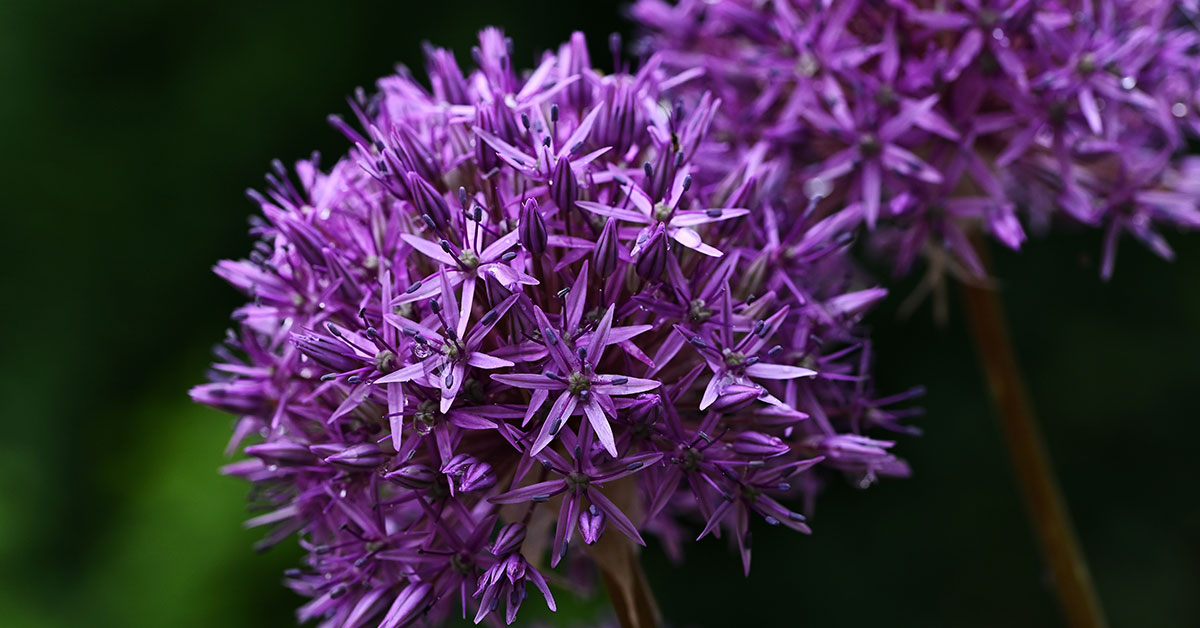If you want to add a beautiful, globe-like purple flower to your garden that will drive pollinators and birds wild, you need not look further than Echinops. This hardy perennial flower is a great addition, and you really don’t see it in very many gardens, so it’s sure to wow visitors and passers-by alike.
What is Echinops?
Echinops gets its name from Greek – echinos meaning hedgehog and ops meaning appearance. It produces not just one flower per stalk, but a cluster of flowers that creates a globe-like appearance, thus why it’s also sometimes called globe thistle.
- Latin name: Echinops
- Other names: Globe thistle
- Native to: Europe, east to central Asia, and south to the mountains of tropical Africa
- Invasiveness: No
- Tenderness: Perennial
- Sun: Full sun
- Water: Regularly until established
- Soil: Well-drained
- Hardiness zone: 3-8
- When to plant: Spring to early summer
- Spacing: 2-4 feet
- Plant height: 3-4 feet
- Bloom period: July and August
- Container friendly: No
- Fertilizer: Not needed
- Toxicity: Non-toxic
- Drought Resistant: Yes
- Deer resistant: Yes
- Pest resistant: Yes
Echinops, sometimes called globe thistle, is a hardy perennial flower native to Europe, Asia, and Africa. It grows well in full sun and isn’t picky about soil, but prefers well-drained soil. Outside of its native range, it is not considered to be invasive. It grows well in hardiness zones 3 through 8.
You can plant globe thistle outside ideally in spring or very early summer. Space your Echinops plants out by about 2-4 feet, as they up to 4 feet tall and have a wide spread. Once established, it will flower prolifically in July and August.
You can grow Echinops in containers, but there are some problems associated with it that we’ll discuss in a moment. Globe thistle doesn’t require fertilizer, is considered non-toxic, deer-resistant, and pest-resistant. It’s really hard to go wrong with this delightful flower.
Growing Echinops in containers
It is possible to grow Echinops in containers but isn’t really recommended. Echinops sends down a long taproot, so if you intend to grow it in a pot, be sure that it’s a very deep pot. In general, globe thistle does better planted in the ground.
When to start Echinops seeds
Echinops, unlike many flowers, actually do better when you sow the seeds directly outdoors. There is no need to start globe thistle indoors. Just sow them outdoors after the danger of frost in your area has passed.
How to harvest Echinops seeds
Harvesting globe thistle seeds is very simple. The first thing you want to do is allow the flowers to fully run their course and become pollinated. Once the flowers in the globe begin to die, you can cut the globe off its stem and bring it indoors. From there, you can further let the flowers dry.
Once dry, they’ll take on a tan color and be very brittle. From here, you can pull the Echinops seeds out of the flower structure and store for next year.
Wildlife attracted by Echinops
Globe thistle is a favorite of native pollinators and birds. Solitary bees, bumblebees, honeybees, and other pollinators use it as a source of food. Hummingbirds are also known to use Echinops as a food source. Other species of birds like to eat the seeds of the flower once the flowers have run their course in late summer. If you want to attract all sorts of birds and pollinators to your yard, this flower is definitely the right choice.
Common problems
Echinops is a pretty hardy perennial plant for the most part, but some gardeners report that it has issues with aphids and powdery mildew in particular. If your globe thistle is not thriving, it could be due to one of these two factors.













